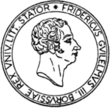Josef Albers began to work on his series of pictures entitled „Homage to the Square“ at the age of sixty-two. He developed hundreds of variations on this theme, right up to his death in 1975.
The essential element common to all these pictures is the repeated square, diminishing in size. The size of the squares can be gleaned from the vertical parts of the frames, while the size of the central square as well as the horizontal parts of the frames depend on how many squares there are and how they are placed. Albers used four basic variants: he started with one comprising four squares, of which „Late Victorian“ is an example, and later introduced three others using just three squares in different constellations. The asymmetrical arrangement of the squares in these pictures generates gentle movement, together with a sense of depth depending on the colours used. It was this interplay between structure and colours which enabled Albers to develop the complex effect of these pictures. He applied the colours directly from their tubes with a spatula onto the Masonite surfaces, which he first primed with several layers of chalk in order to achieve the glowing quality of his colours. On the backs of his pictures, Albers always specified the colours used. For the picture „Late Victorian„, for example, he used „Venetian Red , Reilly Gray (sic.) #4, Reilly Gray (sic.) #5, Mars Yellow„, producing a very warm, earthy colour tone. The contrast between colourful and non-colourful tints, between colours of the same brightness in the two outer and the two inner squares, generates a tension which Albers valued very highly. All the colours together form a harmonious unit, and yet they are filled with power and tension. „Late Victorian“ is a very concise, succinct picture, which was already exhibited in the year it was painted, in the Pace Gallery in Boston. From 1964 to 1967 it was included in a touring exhibition organized by the International Council, which began in the Museum of Modern Art in New York and went on to visit many cities in North and Latin America.






